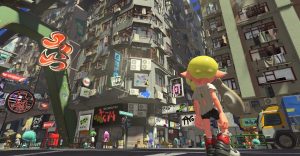Dragon Ball Abridged Was Better Than The Anime

It’s time to recognize that, for as influential as Dragon Ball Z was and is, Dragon Ball Abridged is the best way to get up to speed on what the series has to offer. Dragon Ball Z has been finished since the 90s and now Dragon Ball Super has come to a close, everybody can finally admit that the popular comedic fan dub/re-edit might just be superior.
Dragon Ball Abridged is a fan-based parody of Dragon Ball Z made by a production outfit called Team Four Star. Team Four Star uses the same animated footage as the show while recording different voice-over lines filled with jokes and re-editing parts of the series to create shorter episodes and stellar comedic timing. The entire series has been made available for free on YouTube. In total, there are sixty official episodes interspersed with occasional specials and multi-part episodes, mostly running for about 10-15 minutes apiece.
Related: Dragon Ball Super Future: What’s Next For The Franchise?
While it might seem like heresy to claim that a parody series did it better than the originals, Dragon Ball Abridged certainly merits consideration. Both series have flaws and Dragon Ball Z certainly isn’t bad, but many of its best parts remain intact in the fascinating world of Dragon Ball Abridged.
- This Page: The Differences Between Dragon Ball Z & Abridged
- Page 2: How Dragon Ball Abridged Improves The Anime
The Biggest Differences Between Dragon Ball Z &Dragon Ball Abridged

With the name of the series including the word “abridged,” it makes sense that Dragon Ball Abridged would be shorter than Dragon Ball Z. However, the extent to which that’s true really staggers the imagination. Even if you count all of the special and multi-part episodes as their own programs, Dragon Ball Abridged spans 70 episodes to reach the conclusion of the Cell Games Saga. In Dragon Ball Z, the Cell Games Saga concludes with episode 194. Even in the updated and drastically cut down version of Dragon Ball Z, Dragon Ball Z Kai, the Cell Games Saga ends on episode 98. Each of Dragon Ball Z and Dragon Ball Z Kai’s episodes run for about 22 minutes apiece, almost ten minutes longer than the average Dragon Ball Abridged episode. To put it another way, you could watch Dragon Ball Abridged and get all of the important information in Dragon Ball Z up until the end of the Cell Games Saga in less than half the time it would take you to get to the same point in Dragon Ball Z Kai and less than a quarter of the time it would take to watch Dragon Ball Z until that point.
Dragon Ball Abridged accomplishes its shortened parody by doing what Dragon Ball Z Kai did but without the need to pace episodes in 22-minute increments. This means that many of the miscellaneous plot threads that might take an entire episode or more to wrap up in the main series can be finished in a two-minute gag or skipped entirely. An example of this occurs in Episode 4 of Dragon Ball Abridged when they lampoon the events of the Princess Snake episode of Dragon Ball Z in an extended reference Metal Gear Solid that lasts only a couple of minutes.
On top of that, fights can be shortened down to their critical moments without losing much of the dramatic tension. Keeping the tense action of the animation as well as the biggest story beats intact means that Dragon Ball Abridged keeps up a nonstop momentum with both humor and action. That driving energy carries the viewer through barrages of jokes and action at such a pace that, while not every joke works, enough of them land to keep the series fun while covering the necessary narrative beats to remain recognizably Dragon Ball.
Related: Dragon Ball: 20 Strange Rules Every Saiyan Has To Follow
The Biggest Problems With Both Dragon Ball Abridged And Dragon Ball Z

Humor ages quickly. Even though Dragon Ball Abridged began streaming in 2008, many of the jokes that worked a little over a decade ago don’t fly as well today. Early episodes casually throw out words like “retarded” or make jokes about characters being gay. Those moments definitely don’t hold up well, though the rapid-fire nature humor often obscures the jokes that don’t work by today’s standards. The saving grace for Dragon Ball Abridged happens to be its production time. It turns out that producing a parody series for free takes a lot of time and effort, so only a handful of episodes have released every year. That means as the series progresses and Team Four Star’s comedic chops become more honed, the series outgrows or evolves the more unfortunate jokes made in the late 2000s and early 2010s.
Dragon Ball Z has certainly aged with time, too. Frankly, race has always been one of the issues that Dragon Ball struggled with even in its early days (see Staff Officer Black). All of that came to a head with the introduction of Mr. Popo in the original Dragon Ball. However, Mr. Popo recurs throughout Dragon Ball Z and he’s divisive to say the least. Mr. Popo was heavily modeled after the blackface popularized by American entertainers and animators during the early 1900s. Blackface carried on in Japan and the wider Asian world, especially in manga and animation, long after it became unacceptable in the US in the wake of the Civil Rights Movement. It was shocking that Mr. Popo ever managed to make it onto a syndicated television show, even in the 90s. It’s something even the companies behind Dragon Ball recognized as the 4Kids broadcast of Dragon Ball Z Kai changed Mr. Popo to be a jarring blue color and Viz Media tried to reduce the size of Mr. Popo’s lips in the manga they distributed in the US.
Dragon Ball Z’s frustrating issues don’t end there, either. Fans frequently cite beloved characters like Yamcha and Tien rapidly become irrelevant over the course of the series as a source of dissatisfaction. Power creep, where a protagonist becomes more powerful than their allies to the point that they become inconsequential, is present across many shonen anime series, but it’s particularly pronounced in Dragon Ball Z. On the flip side of that, seemingly important events, like Nail and Kami fusing into Piccolo or Super Kami Guru’s unlocking of hidden potential, are often used to lazily write characters back into usefulness the series (often at the expense of other characters), never to be spoken of again.
Page 2 of 2: How Dragon Ball Abridged Improves The Anime
1
2
















